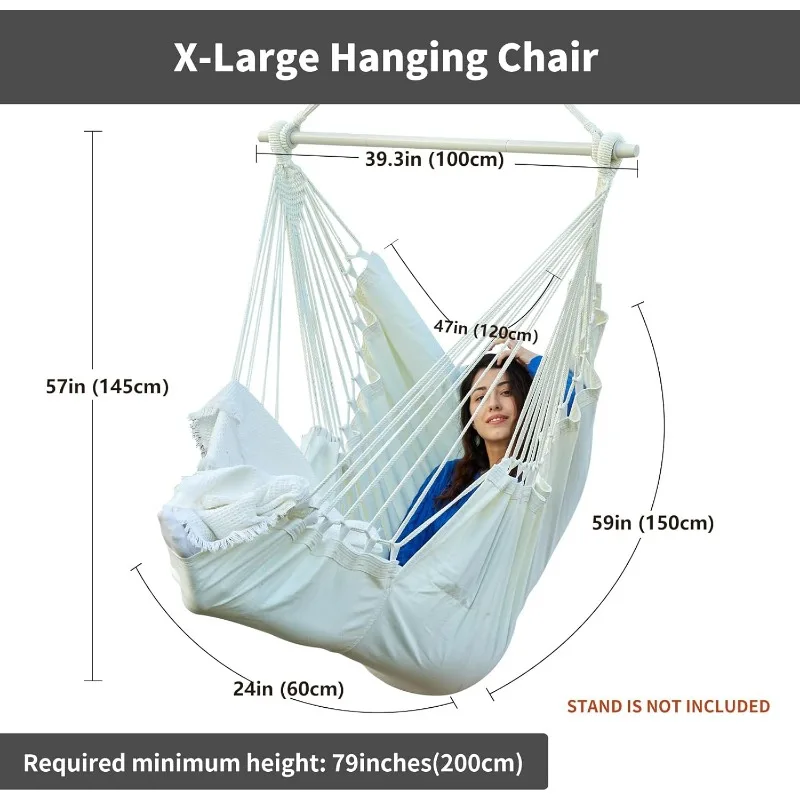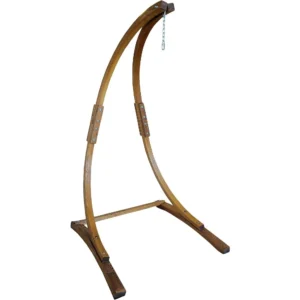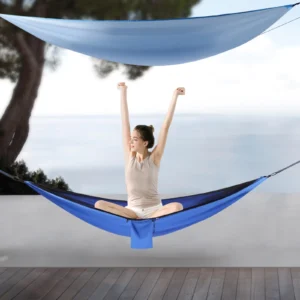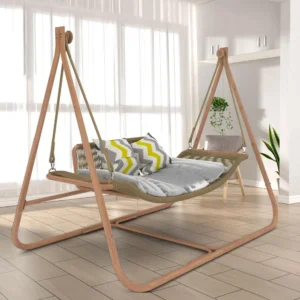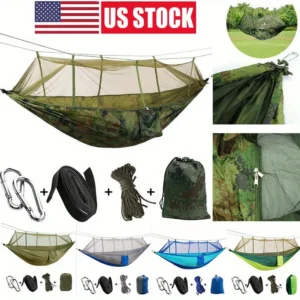There’s something magical about gently swaying in a porch swing or hammock on a perfect afternoon. The gentle motion, the outdoor air, and the break from daily stress create an unmatched relaxation experience. Yet, for many of us, this idyllic scene is interrupted by reality: an aching back, uncomfortable pressure points, or exposure to harsh weather elements that send us back indoors too soon.
What separates a brief, uncomfortable outdoor sit from hours of blissful relaxation? The answer lies in understanding and implementing proper comfort techniques. Creating the perfect outdoor relaxation space isn’t just about aesthetics—it directly impacts your physical wellbeing and mental health. Research consistently shows that comfortable outdoor relaxation reduces stress hormones and improves mood.
This comprehensive guide explores how to transform both porch swings and hammocks into extraordinary comfort zones through ultimate relaxation porch swing hammocks techniques. Whether you’re dealing with an uncomfortable wooden swing or a hammock that leaves you with a sore back, we’ll cover practical, actionable tips to elevate your outdoor relaxation experience.
I. Understanding the Science of Outdoor Comfort
True outdoor comfort combines two essential elements: physical support and environmental protection. When your body is properly aligned in either a seated or reclined position, muscles relax instead of tensing to maintain balance. This proper alignment prevents the aches and pains that often cut relaxation time short.
Several key factors influence your comfort experience:
- Body alignment and support: Your spine should maintain its natural curve whether sitting or reclining
- Pressure distribution: Weight should be evenly distributed to prevent circulation issues
- Temperature regulation: Being too hot or too cold quickly diminishes comfort
- Environmental protection: Sun exposure, insects, and weather elements all affect relaxation quality
- Psychological factors: Feeling secure and enjoying aesthetically pleasing surroundings enhance perceived comfort
The swinging motion of a porch swing provides additional benefits beyond simple relaxation. The gentle rocking stimulates the vestibular system, which can reduce stress and anxiety while promoting relaxation. This explains why many people find moving seats more comfortable than stationary ones, despite identical cushioning.
Both porch swings and hammocks present similar comfort challenges: inadequate support, pressure points, exposure to elements, and improper setup. Understanding these fundamentals allows us to address each issue systematically for maximum comfort.
II. Essential Comfort Upgrades for Porch Swings
A. Selecting the Perfect Cushions and Pillows
The foundation of porch swing comfort begins with proper cushioning. The ideal cushion thickness depends on your swing type: wooden swings benefit from 2-4 inch thick cushions to offset hardness, while padded swings need thinner cushions to supplement existing padding.
Material selection significantly impacts your comfort experience. Look for fabrics that offer:
- Weather-resistance to prevent mildew and fading (Sunbrella, Olefin, and solution-dyed polyester excel here)
- Breathability to prevent heat buildup on warm days
- Quick-drying capabilities for unexpected rain showers
- UV resistance to maintain appearance and extend lifespan
The fill material inside your cushions matters just as much as the outer fabric. High-density foam provides structured support but may retain heat, while polyester fiberfill offers softness but compresses over time. Quick-dry foam combines benefits of both but typically costs more.
For optimal ergonomics, place support pillows strategically. A lumbar pillow positioned at the lower back provides crucial spine support, while smaller pillows can eliminate gaps between your body and the swing. Creating a transform porch swing comfort oasis requires attention to these details, especially for longer relaxation sessions.
Standard cushions work well for most situations, but consider custom options if you have an unusually sized swing or specific comfort needs. Our porch swing chair sets come with ergonomically designed cushions that eliminate the guesswork of proper sizing and support.
B. Proper Installation for Ergonomic Comfort
Even perfect cushions can’t compensate for improper swing installation. For optimal comfort, consider these critical factors:
- Height: The ideal seat height ranges from 17-19 inches from the ground for adults, allowing feet to comfortably touch the ground while seated
- Angle: A slight backward tilt of 3-5 degrees creates a more relaxed seating position and prevents sliding forward
- Clearance: Allow minimum 3-4 feet clearance from walls or railings for proper swinging motion without collision risk
- Weight distribution: The swing should hang level when empty and maintain even weight distribution when occupied
Properly installing your porch swing or hammock ensures maximum comfort and safety. Pay special attention to the anchor points, ensuring they’re secured to structural elements capable of supporting the combined weight of the swing and its occupants. For ceiling mounts, always anchor directly into ceiling joists rather than just the surface material.
C. Accessories That Enhance the Experience
Strategic accessories transform basic comfort into luxury relaxation:
- Weather protection: Canopies, umbrellas, or retractable awnings extend usable time by blocking direct sun and light rain
- Convenience additions: Cup holders, side tables, or book stands eliminate the need to get up, prolonging relaxation sessions
- Comfort enhancers: Footrests reduce leg strain, while armrest padding prevents elbow discomfort
- Ambiance creators: Outdoor-safe string lights or privacy screens enhance atmosphere and relaxation quality
- Storage solutions: Under-seat containers keep blankets and other comfort items close at hand
Our hammock sets with canopy options demonstrate how integrated weather protection enhances the relaxation experience without sacrificing aesthetics.
III. Mastering Hammock Comfort: Essential Techniques
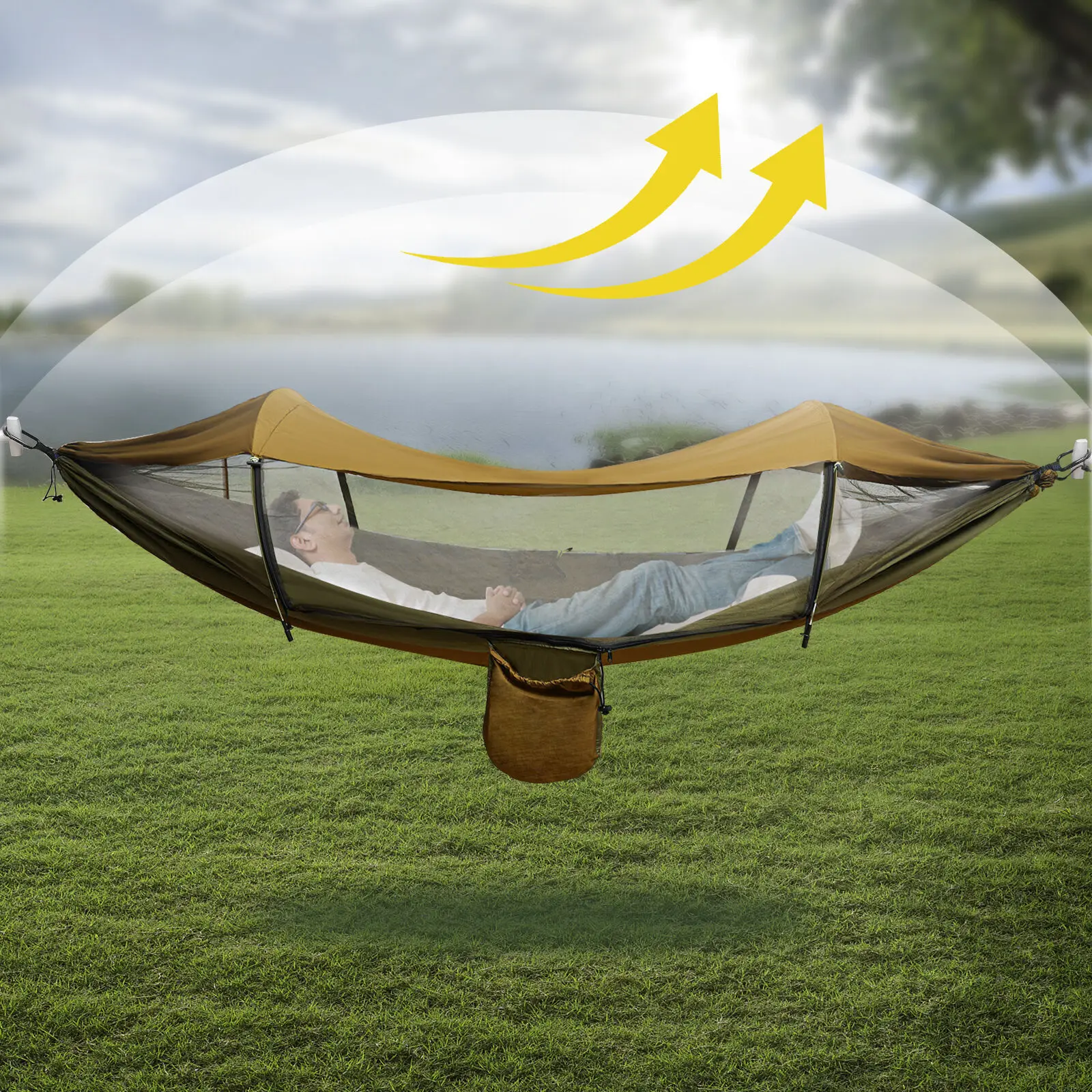
A. The Art of Perfect Hammock Hanging
The secret to hammock comfort lies in proper hanging technique. The most critical factor is achieving a 30-degree suspension angle, which creates the ideal balance between sag and tension. This angle allows for proper body positioning without excessive wrapping or flattening.
Follow these steps for ideal hammock setup:
- Select anchor points spaced appropriately for your hammock length (typically 12-15 feet apart for standard hammocks)
- Attach suspension at a height that allows for sag while keeping the hammock off the ground (usually 5-6 feet high)
- Adjust tension until you achieve the 30-degree angle from anchor point to hammock end
- Test the hammock by lying diagonally across the center, which creates a flatter lying surface
- Make minor adjustments until you achieve comfortable support without excessive wrapping
Different suspension systems offer various benefits. Tree straps provide versatility and tree protection, whoopie slings allow precise tension adjustment, and daisy chains offer multiple connection points for easy height adjustment. Our camping hammocks with stands eliminate the need for trees or permanent mounting solutions while maintaining proper hanging angles.
The diagonal lay technique revolutionizes hammock comfort. By positioning your body at a 30-45 degree angle across the hammock rather than parallel to the center line, you create a flatter, more ergonomic surface. This technique, perfected by hammock cultures in Central and South America, eliminates the “banana” curve that causes back discomfort.
Understanding ultimate relaxation techniques transforms the hammock experience from a novelty to a genuine comfort solution.
B. Solving the Insulation Challenge
Hammock users often experience “Cold Butt Syndrome”—when compressed insulation under your body allows cold air to steal warmth. Unlike ground sleeping where the earth provides insulation, hammocks suspend you in air, requiring specialized insulation solutions.
Underquilts provide the most effective insulation by hanging beneath the hammock, eliminating compression and maintaining loft. Choose temperature ratings appropriate for your climate:
- Summer (50°F+): Lightweight options with 40-50°F ratings
- 3-Season (30-50°F): Medium insulation with 20-30°F ratings
- Winter (below 30°F): Heavy insulation with sub-20°F ratings
Alternatives include specialized hammock sleeping pads, reflective emergency blankets as wind barriers, or purpose-built hammock pads with wings to prevent shifting. Understanding the differences between deep hammocks vs standard hammocks helps determine your specific insulation needs, as deeper models often require more comprehensive underside coverage.
For top insulation, regular sleeping bags work but can compress under you. Quilts designed specifically for hammocks provide better coverage with less weight and bulk.
C. Essential Accessories for Complete Hammock Comfort
Protection from environmental factors significantly extends comfortable hammock time:
- Weather protection: Tarps in diamond, hex, or rectangular shapes create customizable shelters. Ridgelines positioned above the hammock allow quick setup and adjustment.
- Bug protection: Integrated nets provide convenient protection, while separate systems offer more setup flexibility. Our camping hammock sets with bug nets combine comfort with essential protection.
- Structural enhancements: Continuous ridgelines maintain proper sag and provide hanging points for gear, while spreader bars create wider sleeping surfaces.
- Head and neck support: Specialized hammock pillows contour to the unique angles created by hammock suspension.
- Organization: Ridgeline organizers keep essentials like phones, lights, and water bottles within easy reach.
IV. DIY Comfort Solutions on Any Budget
Not every comfort enhancement requires expensive gear. Consider these budget-friendly DIY options:
- No-sew cushion cover: Use outdoor fabric and waterproof fabric tape to create custom-sized covers for foam padding
- Repurposed pool noodles: Cut lengthwise and slide over ropes or chains to eliminate contact points and reduce noise
- Shower curtain weather shield: Clear shower curtains create effective wind and rain protection when hung above hammocks or swings
- Tennis ball chain silencers: Cut slits in tennis balls and place over chain links to reduce noise and pinch points
- Stability enhancement: Add cross-bracing with nylon strapping to reduce swing motion for those who prefer less movement
These ultimate guide porch hammocks modifications cost a fraction of commercial solutions while addressing the same comfort challenges. Most projects require basic tools and can be completed in under an hour.
V. Troubleshooting Common Comfort Issues
A. Solving Porch Swing Discomforts
Even well-designed swings can create discomfort without proper adjustments:
- Back pain: Add a rolled towel or dedicated lumbar support pillow positioned at the lower back curve
- Seat pressure points: Increase cushion thickness or add a memory foam layer beneath existing cushions
- Excessive motion: Install motion-limiting straps or choose heavier cushions to dampen movement
- Chain or rope noise: Wrap contact points with cloth tape or install rubber grommets at connection points
- Weather-related discomforts: Use moisture-wicking seat covers in summer and add washable throws for cooler weather
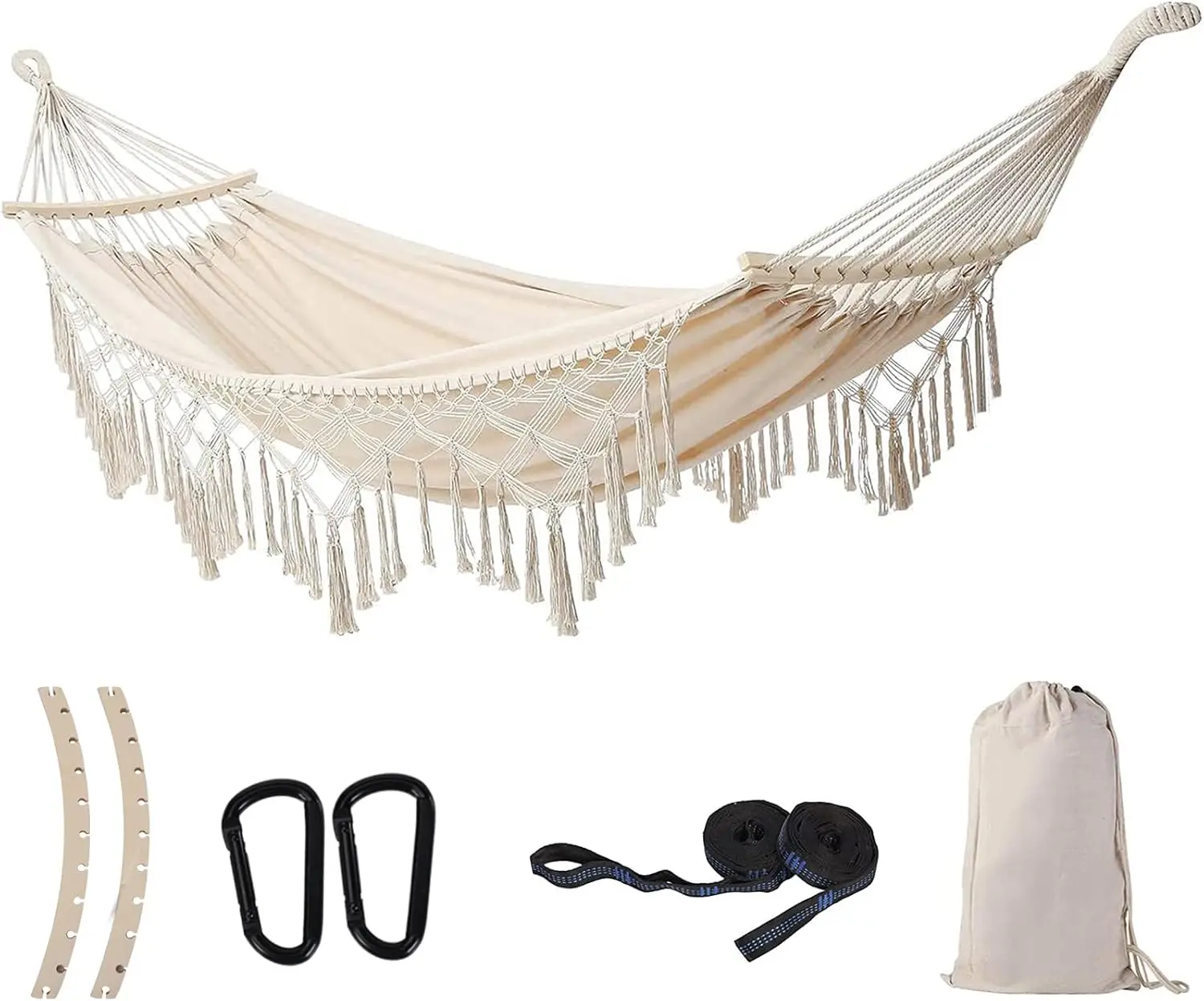
Perfectly positioning swing hammock chairs eliminates most common discomfort causes. Small adjustments to height, angle, and accessory placement make dramatic differences in comfort.
B. Fixing Hammock-Specific Issues
Hammock discomfort usually stems from improper setup rather than the hammock itself:
- Shoulder squeeze: Increase hammock sag and ensure you’re lying diagonally across the fabric
- Knee hyperextension: Place a small pillow under knees or adjust to a flatter lay by increasing sag
- Neck strain: Use a dedicated hammock pillow or adjust suspension height to create better head alignment
- Asymmetrical hanging: Ensure anchor points are level and at equal heights to prevent sliding
- Fear of flipping: Start with a wider hammock design like those in our swinging hammock chair sets which provide more stability for beginners
Most hammock discomfort resolves with proper hanging technique rather than equipment changes. Experimenting with different diagonal positions often solves multiple issues simultaneously.
VI. Maintenance for Lasting Comfort
Maintaining your comfort enhancements extends their life and preserves their performance:
- Fabric care: Clean cushions according to specific fabric requirements—most outdoor fabrics benefit from gentle soap and water cleaning followed by complete air drying
- Seasonal inspection: Before heavy use seasons, check all hardware, chains, ropes, and structural elements for wear or damage
- Storage protocol: Store cushions and weather-sensitive accessories in dry, ventilated spaces during extreme weather or off-seasons
- Refreshing worn elements: Restuff compressed cushions, tighten loose connections, and replace worn hardware before comfort deteriorates
- Safety monitoring: Replace supporting elements showing rust, fraying, or structural compromise, as comfort and safety are interconnected
Choosing the perfect porch hammock fabric affects not just initial comfort but long-term maintenance requirements. Sunbrella and similar performance fabrics may cost more initially but require less maintenance and replacement over time.
VII. Personalizing Your Perfect Outdoor Relaxation Experience
Dark Wood Hammock Sets, Porch Swing Chair Sets
$653.82 Select options This product has multiple variants. The options may be chosen on the product pageA-Frame Stand Hammock Sets, Swinging Hammock Chair Sets
$154.62 Select options This product has multiple variants. The options may be chosen on the product pageCamping Hammock Sets with Bug Net, Ultralight Camping Hammock Sets
$139.72 Select options This product has multiple variants. The options may be chosen on the product pageLight Wood Hammock Sets, Swinging Hammock Chair Sets
$1,359.35 Select options This product has multiple variants. The options may be chosen on the product pageHammock Sets with Canopy, Heavy Duty Hammock Sets
$286.31 Select options This product has multiple variants. The options may be chosen on the product pageCamping Hammock Sets with Bug Net, Complete Camping Hammock Systems
Price range: $82.73 through $97.96 Select options This product has multiple variants. The options may be chosen on the product page
Creating your ideal outdoor relaxation space means adapting general principles to your specific needs:
- Usage customization: Reading requires different support than napping—adjust pillows and angles accordingly
- Body-specific adjustments: Taller users need different hanging heights, while those with back issues benefit from additional lumbar support
- Time and season adaptation: Create easily adjustable setups that accommodate morning sun and afternoon shade needs
- Aesthetic integration: Choose comfort elements that complement your outdoor décor while maintaining functionality
- Environmental considerations: Wind patterns, sun exposure, and privacy needs should influence your setup choices
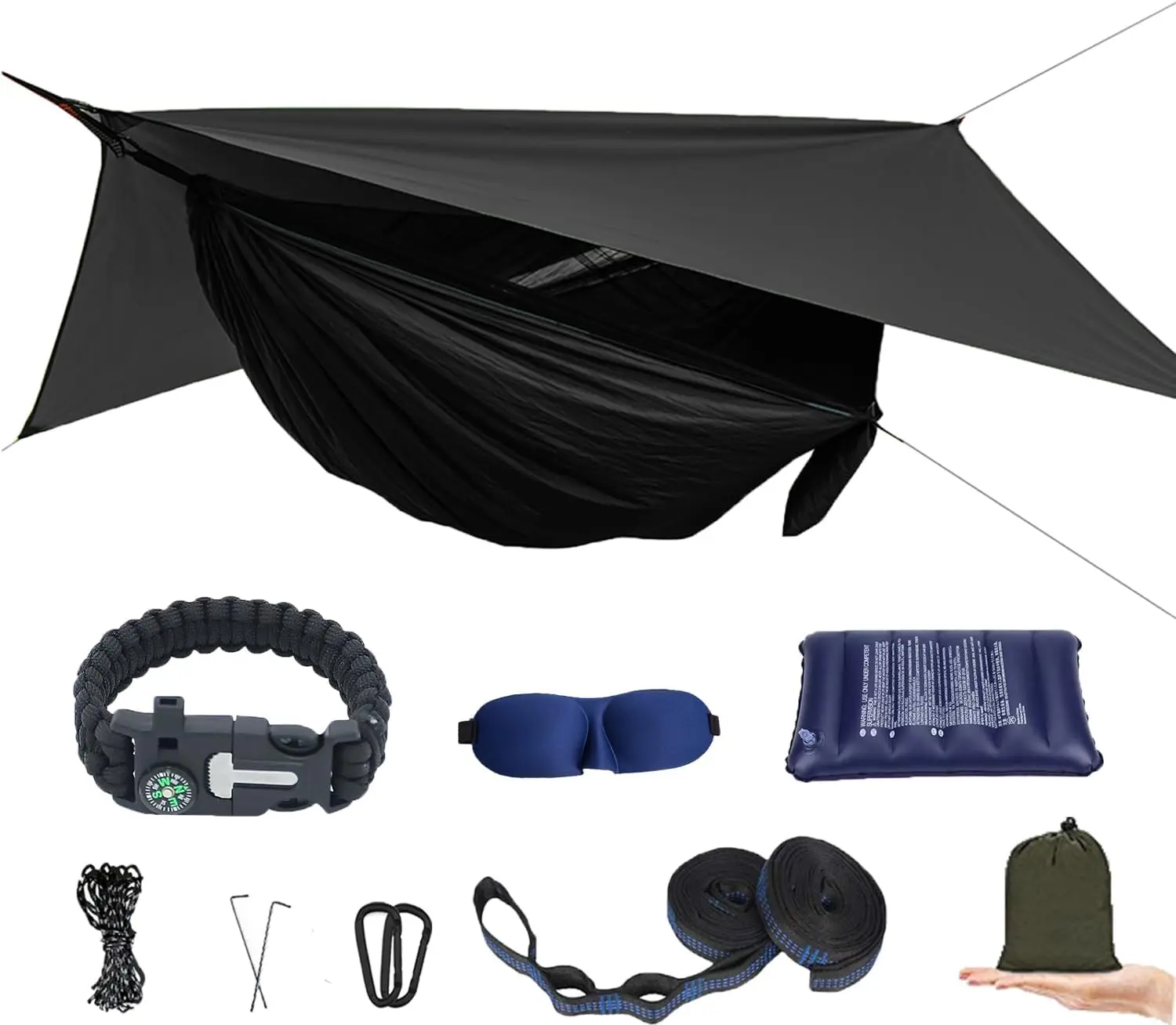
Finding the perfect porch swing hammock location significantly impacts comfort by controlling environmental factors. Our deep seat chair hammock sets provide excellent starting points for customization, with generous dimensions that accommodate various body types and sitting styles.
VIII. Is It Worth Investing in Premium Comfort Solutions?
When evaluating comfort investments, consider:
Q: Do premium cushions really last longer than budget options?
A: Quality outdoor cushions typically last 3-5 years compared to 1-2 seasons for budget versions. Higher-density foam retains shape longer, and performance fabrics resist fading and mildew.
Q: Which elements deserve the biggest investment?
A: Prioritize structural components (the swing or hammock itself) and primary support elements (cushions, suspension). These affect both comfort and safety. Accessories can be upgraded gradually.
Q: Is there a middle ground between premium and budget?
A: Combining strategic premium purchases with DIY enhancements often yields the best value. Invest in quality basics and customize with affordable additions.
Understanding the differences between swing vs hammock options helps allocate your budget effectively. High-quality products with proper maintenance often cost less per use than repeatedly replacing inferior options.
IX. Adapting Comfort Solutions for Special Conditions
Special circumstances require thoughtful adaptation of standard comfort principles:
- Back pain accommodations: Add lumbar support pillows, adjust swing or hammock height for easy entry/exit, and consider semi-reclined positions rather than fully flat
- Extreme weather adaptations: Incorporate quick-dry materials for rainy regions, reflective fabrics for hot climates, or water-resistant layers for humid environments
- Small space solutions: Wall-mounted swing brackets with folding capability or stands with smaller footprints maximize limited space
- Multi-person configurations: Choose wider designs with reinforced suspension and dual-zone comfort layers to prevent the “roll-together” effect
- Pet-friendly modifications: Add washable, scratch-resistant covers and secure attachment points to prevent tipping during pet movement
The ultimate guide to deep seat hammocks provides specific advice for users with special comfort needs, including those with mobility challenges or larger body types.
Creating the perfect outdoor relaxation environment combines science, personal preference, and thoughtful customization. By addressing both physical support and environmental protection, you transform ordinary outdoor seating into extraordinary comfort zones that enhance wellbeing and provide years of relaxation enjoyment.

